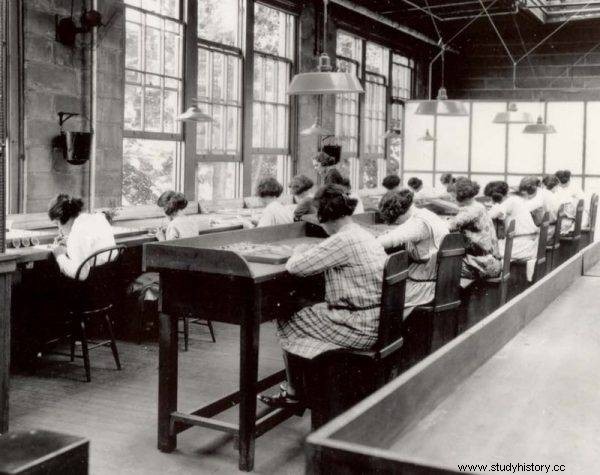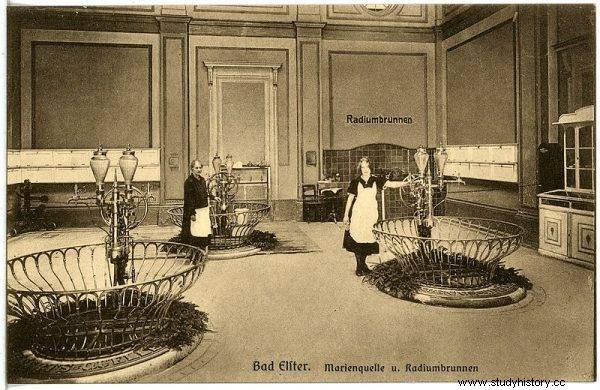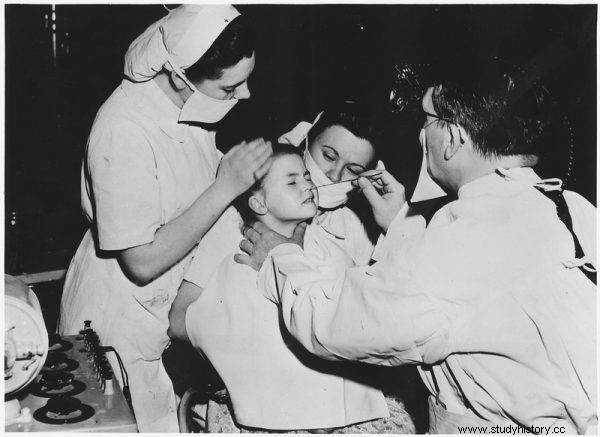On the wave of the discovery of a new element by Maria Skłodowska-Curie and her husband at the beginning of the 20th century, there was ... a fashion for radium. It was seen as a panacea.
At the beginning of the 20th century, the world learned about radioactivity. In 1898 - just two years after Antoine Henri Becquerel discovered the radioactive properties of uranium - Maria Skłodowska-Curie concluded that since the radiation in uranium-containing minerals is stronger than it would appear from the content of the radioactive element, there must be another factor - also with radioactive properties. Soon after, the marriage of Curie informed the world that they had discovered radius - because that's the name they gave the new element.
Rad was a completely fascinating substance. It shone spontaneously in the dark, just like the objects irradiated with it. It penetrated the air and some substances. The radium salts gave off heat and discolored the glass. Its compounds emitted a blue glow, and oxygen turned into ozone upon contact with radium. The almost "magical" properties of radium quickly charmed Western public opinion. People began to see the new element as a remedy for many ailments and - which was important especially for women - for the unpleasant effects of aging.
Radium girls
The inventor himself saw the miraculous features of radium. Pierre Curie believed it was carcinogenic. He decided to test the radiation's effect on himself. For this, exposed his forearm to radium chloride for 10 hours . Later, he regularly described what happened to the resulting wound. It turned out that the skin was peeling and the pain persisted even after a month . People who were close to the scientist mentioned that he was very inflamed. However, hardly anyone cared about it. He carried a vial of radium in his pocket which glowed in the dark. He often entertained his guests with this. Perhaps - had it not been for the sudden death of Pierre Curie in a street accident - the world would have realized in time that the new element also had a dark side.

Four thousand employees of the U.S. factories The Radium Corporation, where these devices were developed, were encouraged to lick their brushes with radioactive paint every day during their shift.
However, this did not happen. The West was fascinated by council. Fluorescent paint with radium compounds in the USA was painted, among others, by watch faces to glow in the dark . Even the US government placed an order for such devices. The watches were to go to the army. Four thousand employees of the U.S. factories The Radium Corporation, which developed these devices, were encouraged to lick their brushes with radioactive paint each day during their shift. In this way, they cleaned the tool and "sharpened" the brush tip for a more precise application of paint.
The effect turned out to be tragic. Within a short time, masses of women began to complain of problems with their teeth, and then with bones and joints. There have been cases of neoplastic diseases. The company first concealed from its employees that they were dealing with a toxic substance. Later she assured her that she was safe. In the end, however, it was no longer possible to conceal the matter. There was a high-profile lawsuit. U.S. Radium Company had to change the production process and pay high compensation.
Treat wrinkles
The allegedly beneficial effects of radium on female beauty were turned into a profitable business by a certain Alfred Curie. Although he bore the same surname, he was not related to the chemists' marriage. Instead, he was a medically educated man. He was the one who patented Tho-Radium Creme in 1930, a medicine for wrinkles containing 0.5 grams of thorium chloride and 0.25 milligrams of radium bromide per 100 grams of product. The SECOR company, which started to produce this cosmetic, took care of the appropriate promotion. In the press and on posters, there were slogans praising the radium-based complexion cream. Anyway, SECOR has released a whole line of such products - incl. powder, soap and even toothpaste.

Radium was also used in spa centers and sanatoriums. Baths in healing waters and other radioactive therapies were offered.
Competition, however, was awake. On the English market, Radior Company produced face creams and tonics in parallel. It guaranteed customers that the radioactivity of their products lasted up to 20 years . Overseas, in Pittsburgh, the Radium Chemical Company has released radioactive face masks , among others . They were supposed to tone the skin by increasing blood pressure, prevent anemia and promote health. Anyway, the same effect was to be caused by "radium" corsets for ladies, favoring slimming and firming the body . It was enough to put them on for 20 minutes a day to feel the beneficial effects.
A radioactive panacea
Despite "accidents" such as "radium girls," Western societies still believed in the miraculous properties of radiation. To such an extent that with the use of radium and uranium was produced, among others, wool for babies, vaginal suppositories for women, headache lozenges , toys such as "little chemist" with small samples of radioactive material, water dispensers, and even ... potency drugs, which was enough to carry in a trouser pocket to cure sexual "inability". The marketing value of radiation was so great that even if there were no radioactive substances in the products, their presence was suggested. Example? X-ray condoms or Radium Nutex.
Radium was also used in spa centers and sanatoriums. Baths in healing waters and other radioactive therapies were offered. The element was also used in oncology - but its potentially beneficial effect was eliminated by strong radiation. Even in the 1970s, advice was given to children - incl. for tonsillitis.

Even in the 1970s, advice was given to children - incl. for tonsillitis.
The discoverer of radium - Maria Skłodowska-Curie - became its victim herself. She died of aplastic anemia, a type of bone marrow failure. She also suffered from radiation sickness.
Today there is no doubt that the "miraculous" glow-in-the-dark radium is also a very harmful substance . It is the element considered to be the most radioactive. Radiation exposure damages teeth and bones. It causes non-healing ulcers and cancer. Currently, radium is used in atomic physics and industry - for example in the construction of the atomic clock, in optics, and also in industrial radiography. The mass-scale use of the radioactive element in everyday products is just a terrifying past.
Bibliography:
- Denis Brian: The Curie Family . Warsaw:Amber, 2006.
- Józef Hurwic: Maria Skłodowska-Curie and radioactivity . Warsaw:Zofia Sobkowska Educational Publishing House, 2008.
- Susan Quinn: The Life of Marie Curie . Warsaw:Prószyński i S-ka, 1997.
